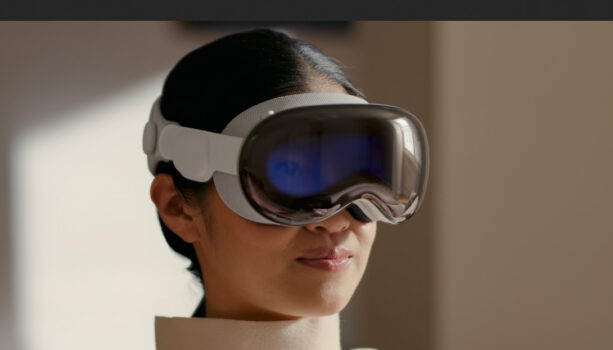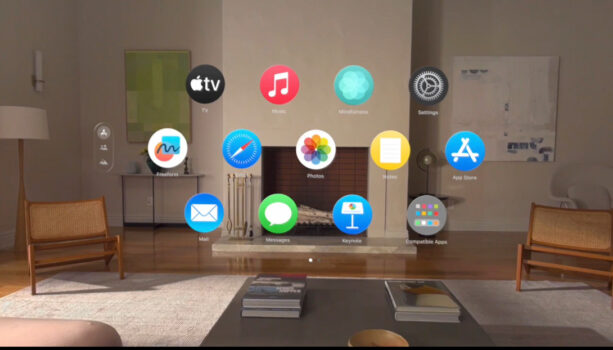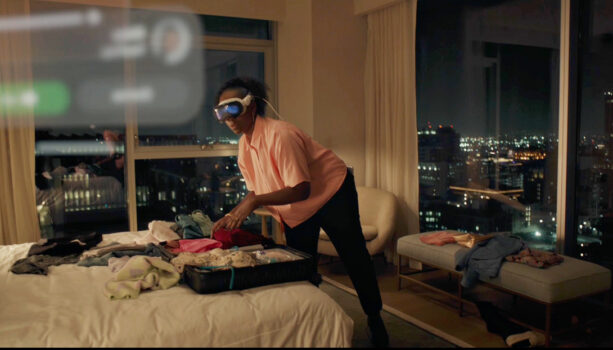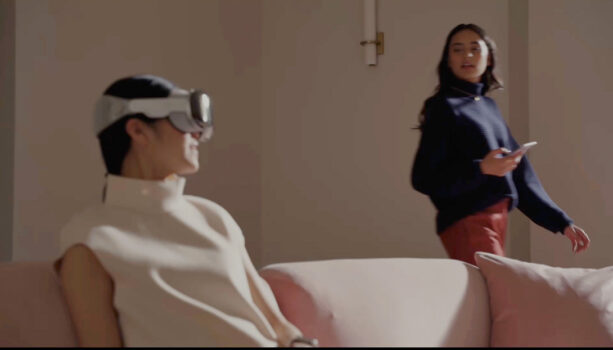
I recently read a CNN article on Tim Cook and the risk he’s taking with Apple Vision Pro. The gist of it is this: The Vision Pro will be Apple’s riskiest launch in years and could end up being the product that defines Tim Cook’s legacy.
What struck me is the point of view. The main concern is the fate of one person, Tim Cook. And fair enough, his legacy at Apple might indeed be affected by the success or failure of the Vision Pro. But I can’t help thinking about how there’s high visibility attention on a single wealthy-for-life individual — but far less talk about the societal impact of this latest Apple product, which, to my mind, conjures up the phrase, “gentrification of extended reality technologies.”
Have you seen the Apple Vision Pro movie? It’s a statement, not only about the product, but also of the affluence of the “neighborhood” that Apple associates with their target demographic.
The thing about gentrification of physical neighborhoods is that it implicitly demotes the preceding locals and the context of their lives, despite marketing claims to the contrary. I’ve watched this happen first hand in the so-called Arts District in Los Angeles. Artists and artists’ lofts have, with few exceptions, given way to expensive upscale condominiums and trendy food and drink spots.
The first impression the Vision Pro movie makes is that Apple’s target demographic lives in immaculate upscale dwellings ostensibly in an upscale neighborhood. Of course this compliments the marketing of an AR-forward technology that includes seeing the physical environment while the projected interactions are displayed as a visual overlay.
However, a cluttered wall or messy pile of clothes is also going to be a part of the Vision Pro experience, and a major distraction I think. The minute I see highly staged and perfected environments in the marketing I suspect that gentrification – in this case, gentrification of our dwellings – is in play.

If that was the end of it, we could excuse it as marketing pretention to flatter the product. But then there’s the retail cost of $3,500 for the privilege of Vision Pro ownership and the case for gentrification becomes unavoidable.
When VR and AR, component technologies of XR, were still emerging from niche implementations, it was interesting that Google created viewers out of cardboard, to take advantage of the ubiquitous technology of the cell phone and provide some form of XR experience to virtually anyone, anywhere. The cost of entry was exceedingly low, although we understandably bemoaned the lack of apps and motion sickness.
Subsequently, however, the push for a superior stand-alone headset has seen rising costs while still not achieving widespread adoption. Consumers have balked at the increasing retail price of the Meta Quest headset, which has doubled between the two latest versions. Still, I suppose it’s something to say that it comes in under $1,000, similar to the cost of a well-configured recent model iPhone.
Now with the Vision Pro, however, Apple has really upped the ante and set its sights on a privileged few. At $3,500, it costs five times as much as the Meta Quest 3 and ten times as much as the Meta Quest 2. It’s priced like a very well configured MacBook Pro, but without the corresponding breadth of software ecosystem to power it.
Hopefully the cost of anything is, first and foremost, a reflection of its relative value.
Well, as shown in the Vision Pro movie, the primary functionality of the Vision Pro is watching visuals, entertainment and video chats. So, your friend can appear to be hovering over your bed as you chat and walk about the room. Amazing? Sure, but who needs this?
Perhaps truly absurd is the person packing a suitcase, while wearing the headset and then taking a video call. It’s already challenging that there’s a headset and tethered battery to wear at all, but to wear it while doing a real-world chore, just in case a call comes through? No one… literally no one with an ounce of practicality is going to do that.
Yet the implication is that if you want to stay connected, you should want to do that, at all times. Ironically it also suggests that your cell phone, which easily slips out of the way into a pocket or waits, also out of the way, patiently on a counter, has become just so… passé, so… inadequate. Gentrification of your phone calls never looked so sci-fi, yet so pointless.

Consequently, my concern is that this whole class of technology still won’t become ubiquitous like the cell phone. The potential benefits of XR’s components, VR and AR, could be enormous for everyone.
But like gentrification of a neighborhood, people will be priced out of the Apple XR privilege in droves. There will be fewer customers, but with necessarily greater economic means. Their needs and desires will take over the paradigm and be the influence for most content.
And consider this: the Apple marketing movie shows movie watching with the Vision Pro. Are you in a family of, let’s say, four? Well, that’s $14,000 in headsets for everyone to take part together.
Yet Apple touts an inclusive paradigm of the Vision Pro by displaying an uncanny valley version of your face on the headset to people who look at you. But rather than inclusivity, the implicit message is, “I live in a world you can’t experience without affluence.”

I’m skeptical that Apple has cracked the code for selling the world on XR, but we may nonetheless be witnessing the gentrification of a technology.
Of course, it’s not so much that Apple is trying to gentrify this domain. Solving the challenges of this technology has been expensive, and the devices we’d be happy with would inevitably be expensive, at least at first. I just hope XR doesn’t remain a vanity project for Apple with usefulness based on deep pockets and superficial ideas of what we need to lead meaningful lives.
Update: I’ve been online at Apple’s Vision Pro sales page to see what kinds of options are available for the Vision Pro. To my surprise, the first step you’re compelled to complete is a scan of your head for measurements needed by Apple to include the correct fit of Light Seal and head bands. You’ll need an iPhone or iPad with Face ID to find the right size. If you’re on a desktop computer, you’ll also scan a circular Apple code on the screen that synchronizes their site with your captured head dimensions.
After looking left, right, up and down, twice, your dimensions are submitted to Apple. The next step is to select options for your vision, whether you have a prescription, contacts or readers. You won’t need precise prescription information because the inserts are generalized and accommodate most prescriptions. The optical inserts run between $99 and $149.
After all of the sizing procedure, you’re able to select a storage memory size, from 256GB to 1TB. The 1TB option is $3,899.
My final point is this: If there was any doubt this device is a vanity device, the custom fit and optical inserts tell you that each Vision Pro is tailored primarily for just for one person. Since the optical inserts attach magnetically, you could swap them out with another user, but in practice, is that practical? And what about the Light Seal and head bands, also sized to fit?
Of course, the real measurements that count are product sales and paradigm adoption rates.
- Virtual curating frees artist - April 16, 2024
- Apple and the bane of VR gentrification - February 3, 2024
- Net neutrality is dead. Why that’s bad for OpenSim grids - December 16, 2017
